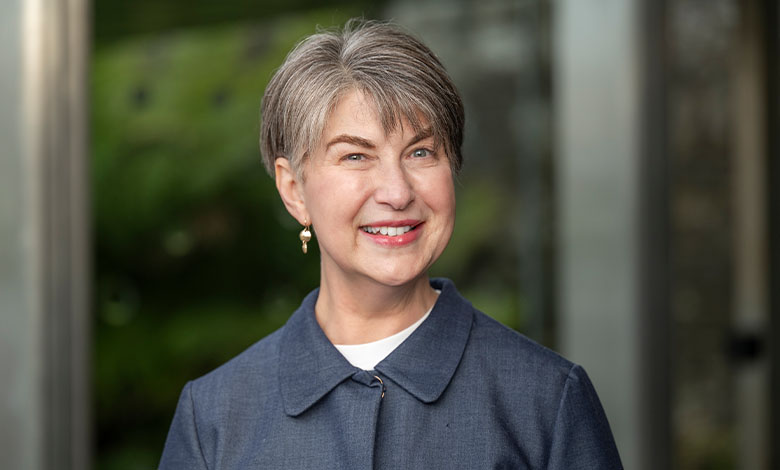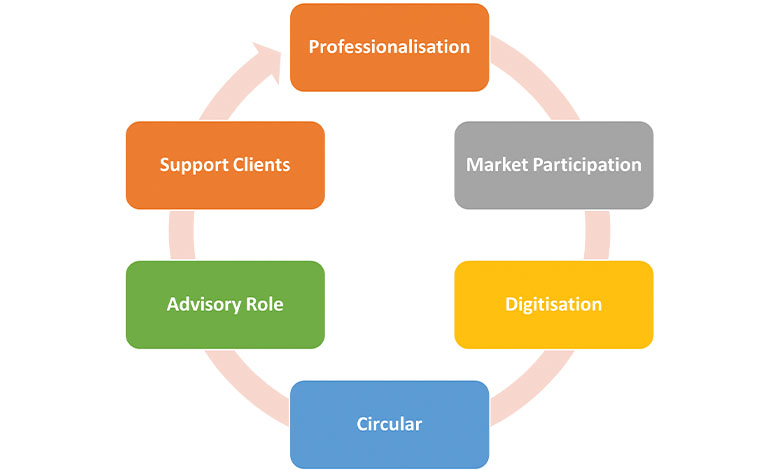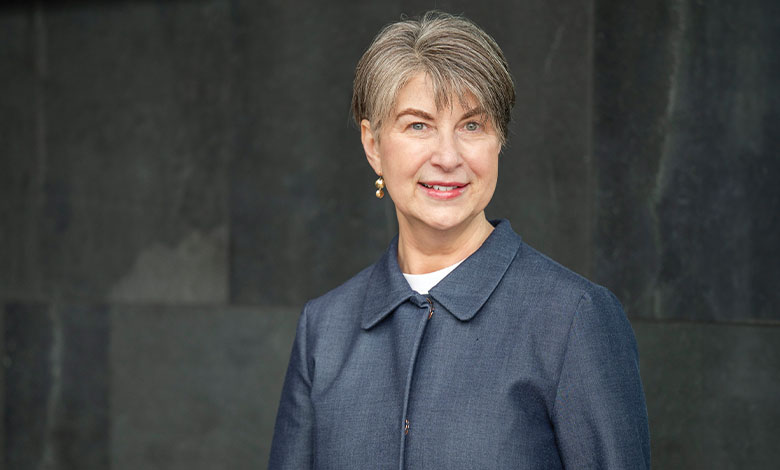Shaping the future of public procurement

Anne Lannon, Head of Professional Services Portfolio in the Office of Government Procurement (OGP), discusses the potential for transformation under the banners of professionalisation of public procurement, the digital delivery of services, and active market engagement.
The OGP was established in 2014 and is a division of the Department of Public Expenditure, NDP Delivery and Reform, it has three key functions. These are:
- acting as the State’s national authority for public procurement;
- acting as a central purchasing body; and
- leading the delivery of public procurement reform.
The Sourcing and Professional Practice team sits within the central purchasing body function of OGP and establishes national procurement solutions for common requirements across eight categories of spend for the public sector.
To date, the OGP has established 92 central solutions, not including bespoke solutions for strategically important projects for the State, which for 2023 alone saw competitions with an estimated €3 billion delivered.
Explaining that the OGP has an overarching brief to “shape the future of public procurement”, Lannon highlights a twofold aim. Firstly, influencing the public procurement environment to provide for practice that is transparent, as well as socially, economically, and environmentally sustainable.
Secondly, delivering quality solutions that meet the needs of the OGP’s clients, deliver value for money for the taxpayers, and deliver on government priorities.
“The challenge for us in sourcing as a central purchasing body is to deliver government policy through our solutions and also to influence more spend from our client base. In 2024, we expect to deliver at least another €3 billion in procurement competitions,” says Lannon.
“Of the 92 central solutions that we have in place we have a very ambitious renewal programme for 51 of those solutions.”
Importantly, a significant number of those projects will include the facility for direct drawdown, with a twofold benefit of enabling clients to access services readily and easily, while also cutting down on the administrative time involved in running ‘mini competitions’.
“It is equally important for the OGP because approximately 75 per cent of sourcing resources are devoted to delivering mini competitions for our clients. What we are trying to do is strike the balance between supporting clients and allowing further autonomy and greater ease of access,” Lannon adds.
Despite this, the OGP expects to deliver between 500 and 600 mini competitions for at least 300 clients over the course of 2024.
Professionalising public procurement
Emphasising that professional practice continues to be a well-established priority for the OGP, Lannon points to an operating environment whereby demands on procurement practitioners are increasing constantly, while policy makers are seeking to leverage government spending to contribute to the achievement of broader horizontal policies.
“We need to remain mindful of the fact that as public procurement practitioners, our role is as an enabler. Practitioners alone cannot deliver on policy. We need ongoing involvement of our policy departments, subject matter experts, and the marketplace.
“We need to develop and maintain a strong cohort of professional procurement practitioners if we are to deliver on a challenging, aggressive, and ambitious programme of work,” she says.
Defining the OGP’s unique selling point (USP) as its people, Lannon stresses the value and scarcity of procurement expertise, insisting that it is incumbent on everyone involved to “prioritise the professionalisation of our discipline”.
Procurement as a function is not confined to either the private or the public sector in Ireland as a profession, and Lannon describes the ongoing undervaluation of procurement as a critical function as “very disappointing”.
In seeking to address this, the OGP has established a professional practice unit, responsible for developing and implementing programmes to upskill staff, with both an internal and external focus.
Internally, the OGP’s Training Academy focuses on staff development, and improving capabilities across a range of required skills and competencies. This sits alongside other measures employed in the OGP, including a further education programme, and an in-house mentoring and coaching programme.
Externally, the OGP’s Commercial Skills Academy (CSA) provides training for public service managers to gain an understanding of key issues, commercial skills, and best practices in project delivery.
“This is particularly important in the context of delivering on the objectives of the National Development Plan (NDP). To date, the CSA training programmes have had a very significant level of take up,” she explains.
Lannon summarises the OGP’s vision for professional practice improvement as:
- establishing a vibrant community of practicing professionals at various stages across the range of career development;
- building a profession that provides for formal professional qualifications, professional recognition, and continuous professional development;
- creating standards of practice and a code of conduct and ethics; and
- developing professional procurement practice as an attractive career that is fulfilling for the individual, that provides for development, career progression, and, enables talent retention within the procurement profession.
Opportunities

Digital delivery
Turning to a further opportunity presented by the digital delivery of services, Lannon says that as practitioners, procurement professionals need to be able to harness the power of digitalisation in their work.
“Embracing and leveraging digitalisation is a key strategic objective for us and the OGP has signalled our ambition by appointing an Assistant Secretary to lead in this important area.”
In 2023, the OGP launched a new e-Tenders platform to assist with digital delivery, the implementation of building information modelling (BIM) by the OGP’s construction policy unit across several construction policies is also a priority.
However, Lannon recognises the need to focus on providing digital tool sets for practitioner use on a daily basis, such as automating routine process steps to compile reports and utilise the ability to use and reuse content.
“Interestingly, the OGP has established a robotic process automation framework, and we are looking at how we can leverage that internally to automate processes at our service desk end. We expect approximately 50 per cent of the standard type of query that we receive to our service desk is suitable for automation, and that will allow us to free up staff to focus on other areas of work.
“Importantly, digital tools can also assist our suppliers. It is incumbent on us at all times to make the tendering process as attractive, straightforward, and accessible as we can in our markets. We need to ensure that the tendering process is not of in itself an inhibitor for our suppliers’ ability to participate and compete.”
Market engagement
The third key opportunity raised by Lannon centres on active market engagement, with the OGP recognising the need for better understanding of supplier behaviours.
Dispelling a common misconception that public sector work is always the most attractive to tendering suppliers, she highlights the competitiveness of the current market, adding: “We need to make sure that public sector work remains attractive and be constantly mindful that one of the key objectives of public procurement is to stimulate markets and drive competitions.”
To this end, Lannon points to the publication Circular 5/23 in 2023 as an example of how the OGP is seeking to reduce barriers and increase competition. The circular was designed to further enable SMEs to compete for public contracts and sets out positive measures for contracting authorities to take to promote SME participation.
The OGP places great importance on providing feedback to unsuccessful bidders, believing this feedback to be of value when considering the levels of success achieved by bidders who return for future tenders, and there is a recognition that this approach is helping to ensure the marketplace keeps pace with the OGP’s requirements around green and social considerations, for example.
Lannon is also clear that challenges persist. Citing some market areas, such as cloud, as an example of these, she says that the OGP is continuously working to examine and develop appropriate approaches to seek solutions.
Beyond the three identified “headline opportunities”, Lannon concludes by outlining a number of smaller, operational opportunities that exist in 2024, including several client- and supplier-facing events aimed at leveraging the OGP’s service experts and key account managers to work on improving engagement with clients and suppliers.
Additionally, in 2024 the OGP plans to pilot an advisory model approach whereby it acts as an advisory procurement expert for clients at the strategic end of the procurement process.
Finally, Lannon outlines that the OGP is working to publish a circular on reporting on the use of central arrangements. “One of our primary objectives is to increase the uptake of our central solutions by clients right across the public sector,” she explains. “A key action arising from the recent memo from the Government is the publication of a circular, which will require government departments and agencies to report on their use of central arrangements, and work is progressing in that regard,” she concludes.
“Practitioners alone cannot deliver on policy”
Anne Lannon, Head of Professional Services Portfolio, Office of Government Procurement






